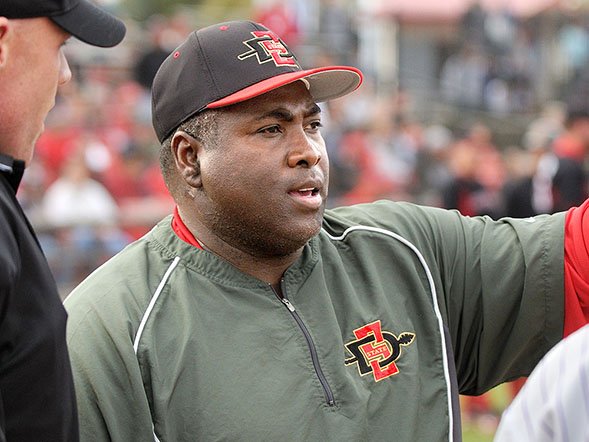And so it begins …
The New York Yankees’ Ron Blomberg, the first DH in 1973 (Associated Press photo)
Baseball purists are aghast 51 years ago today as Major League owners approve — gasp — the use of designated hitter in the American League.
The game-changing move is set up as a three-year experiment to run through the 1975 season.
The experiment, of course, never ends and the DH now has been part of the American League for more than a half-century.
The impact of the DH is an immediate one in the American League, where the overall batting average of .239 in 1972 jumps to .259 in 1973 before leveling at .258 for each of the 1974 and ’75 seasons.
While the American League teams see a significant spike in team batting averages after adopting the DH in 1973, their counterparts in the National League – clearly with its better-hitting pitchers – already are batting an aggregate .254 in 1973 with averages of .255 and .257 following in 1974 and ’75.
Rick Wise, pitcher — and hitter
“The designated hitter rule is like letting someone else take Wilt Chamberlain’s free throws,” says longtime pitcher Rick Wise, who hits 15 home runs during his 18-year career in the majors.
The National League nearly adopts the DH – another obligatory gasp here – a few years later. Only some miscommunications in the 1980 voting, though, by the Philadelphia Phillies and Pittsburgh Pirates keep the status quo – pitchers still hit, yay! – in the NL.
The National League finally yields to using the DH, going full-time with it during the Covid-shortened 1920 season before finally – last gasp – fully embracing the DH for its teams in 2022.
Of course, there are converts over the years with no greater one than Hall of Fame outfielder Tony Gwynn, the eight-time batting champion who spends his entire 20-year career in the National League with the San Diego Padres.
“Early in my career, I hated the designated hitter and thought baseball should get rid of it,” Gwynn tells ESPN in 2003. “But toward the end of my career, I realized that it allows older players to play a few more years. Paul Molitor is a great example. If there were no DH, it would’ve been difficult for him to accomplish all he did later in his career.
“I’m a National League guy, so I personally like the NL style of play,” Gwynn says. “As Lou Brock once said, ‘You gotta earn it.’ You can’t hide in the NL; you have to go out and play defense in order to have the right to hit.”
Gwynn later becomes an ardent proponent of the DH when he begins coaching college baseball at San Diego State.
“I like having that extra offensive guy in my lineup and the extra possibilities it gives me – like giving a guy a “day off” by making him the DH,” Gwynn says.
“I realize a lot of fans don’t like the DH, but it’s a chance for a guy like Rickey Henderson to play another year. It’s great for players who’ve had success in the game, but maybe can’t take the grind of playing a full season at the end of their careers. It allows them to stay in the game — and that’s a good thing.”
Hall of Famer Tony Gwynn while coaching at San Diego State (Ernie Anderson photo)


